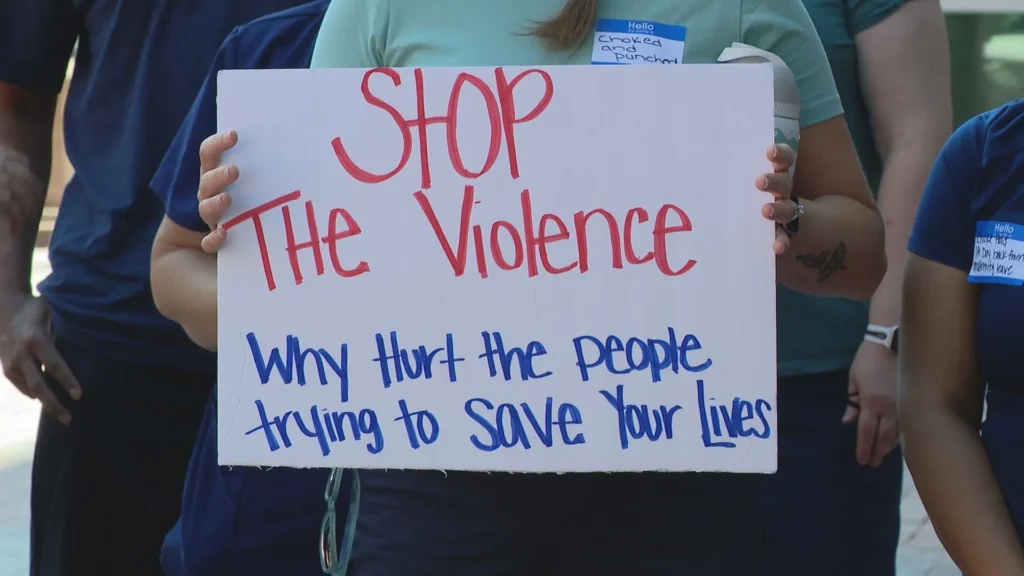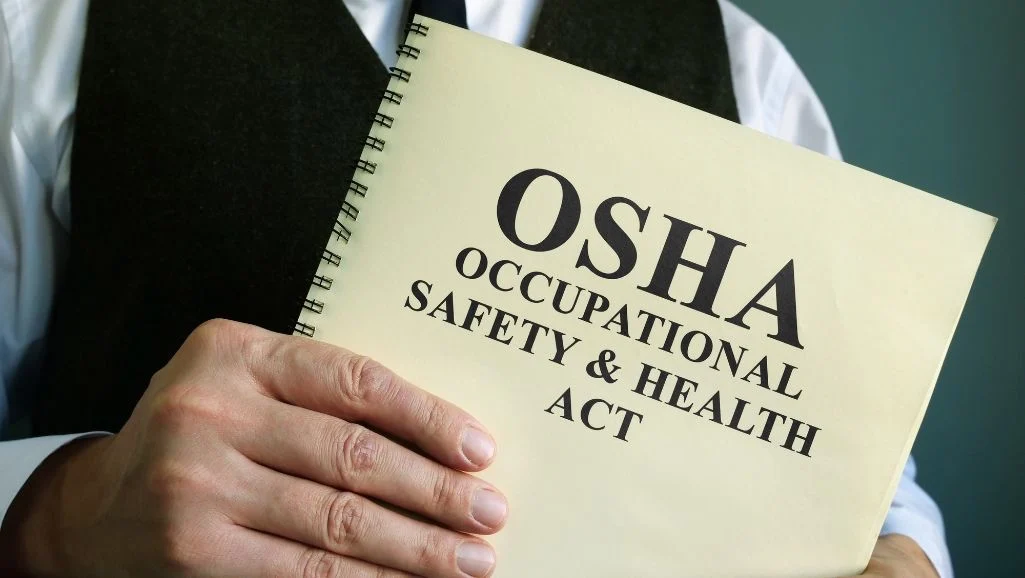
Healthcare Worker Violence Epidemic Prompts OSHA Workplace Violence Prevention Mandates
2025
1. Rising Epidemic of Violence Against Healthcare Workers

Workplace violence in healthcare settings has surged globally, manifesting in physical assaults, verbal threats, and even lethal attacks, underscoring a deeply troubling public health crisis.
In the United States, health care professionals endure assault rates far exceeding those in other industries. According to the Bureau of Labor Statistics (BLS), the lost-workday incidence rate for workplace-violence-related injuries in healthcare and social assistance sectors is approximately 11.7 per 10,000 workers annually, compared to just 2.0 per 10,000 across all industries. Certain sub-sectors, like psychiatric hospitals and substance abuse hospitals, report alarmingly higher rates—146.5 injuries per 10,000 workers.
Build the future you deserve. Get started with our top-tier Online courses: ACCA, HESI A2, ATI TEAS 7, HESI EXIT, NCLEX-RN, NCLEX-PN, and Financial Literacy. Let Serrari Ed guide your path to success. Enroll today.
The crisis goes beyond statistics. A national survey in 2024 revealed that more than 80% of nurses experienced some form of workplace violence within a year, with nearly half reporting an increase in such incidents.
High-profile attacks have further illuminated the risk. At a Pennsylvania hospital, a hostage and shooting incident left staff wounded and a police officer killed—a chilling reminder of escalating threats in hospital settings.
Globally, the violence spans continents. In Melbourne, Australia, hospitals recorded a violent “code black” event—indicating armed or serious threats—every 12.8 hours in a single year, prompting urgent security and legislative responses. In India, tragic incidents like the stabbing of a junior doctor during night duty sparked widespread protests and state-level legislative changes aimed at providing stricter protections.
2. OSHA’s Move: From Voluntary Guidance to Mandated Standards

A Decade of Voluntary Measures
OSHA (Occupational Safety and Health Administration) has historically issued voluntary guidelines to assist healthcare employers, beginning in 1996 and updated as recently as 2016. These guidelines encourage multidisciplinary committees, risk assessments, training, and safety policies tailored to specific healthcare settings—ranging from hospitals and clinics to home health services.
However, without a binding federal standard, compliance has been inconsistent. Enforcement has relied on the General Duty Clause, enabling OSHA to hold employers accountable when they fail to protect workers from recognized hazards, but without specific prevention requirements.
Catalyst Events: Tragedy Spurs Action
In October 2023, the tragic murder of visiting nurse Joyce Grayson during a home visit brought grim attention to the risks faced by home health workers. OSHA cited the employer, Elara Caring, for failing to implement adequate violence prevention measures; proposed fines exceeded $160,000.
That case, and others—including serious injuries or fatalities in psychiatric facilities and at veterans’ medical centers—led OSHA to increasingly use its enforcement powers to penalize employers under the General Duty Clause.
Proposed Federal Standards: Rulemaking in Motion
OSHA’s regulatory agenda now includes a proposed rule titled Prevention of Workplace Violence in Health Care and Social Assistance, slated for December 2024. This rule would mandate written violence prevention programs, hazard assessments, training, incident logs, and mitigation strategies. A 60-day comment period would follow publication, with a final rule expected in 2025.
The draft framework covers both healthcare and social assistance sectors, recognizing these workers face disproportionately higher risks.
Legislative Push: Congressional Action Mirrors OSHA’s Agenda
In April 2025, a bipartisan coalition led by Representative Joe Courtney of Connecticut and Senator Tammy Baldwin of Wisconsin reintroduced the Workplace Violence Prevention for Health Care and Social Service Workers Act. This legislation would require OSHA to issue enforceable standards for violence prevention across healthcare settings—from hospitals to home-based care—and mandate unit-specific risk assessments, physical and staffing controls, logging incidents, and protection for reporting workers.
The legislation echoes California’s earlier state-level standard and reflects wide support from nursing organizations like the National Nurses United, whose leaders emphasized that proactive planning and congressional momentum are urgently needed to safeguard workers.
The proposed standards are expected to apply to over 300,000 establishments and carry an estimated $1.22 billion annual compliance cost. These actions reflect a shift toward mandatory, enforceable frameworks, moving beyond voluntary compliance.
Ready to level up your career? Join our expert-led Online courses in ACCA, HESI A2, ATI TEAS 7, HESI EXIT, NCLEX-RN, NCLEX-PN, and Financial Literacy. At Serrari Ed, we turn potential into achievement. Start your journey today!
3. Analysis: What Lies Ahead and Stakeholder Implications
For Healthcare Employers
Governance and Compliance: Employers must proactively begin drafting comprehensive workplace violence prevention plans—including hazard assessments, staff training, environmental redesign, security measures, and incident tracking—to meet current and upcoming regulatory expectations.
Financial Planning: The estimated costs of compliance—over $1 billion annually—underscore the need for budgeting and securing resources to implement prevention measures.
For Workers and Advocates
Stronger Protections: Should OSHA finalize the rule or Congress pass legislation, healthcare workers would receive enforceable protections rather than optional guidelines—a critical advancement.
Empowerment and Reporting: Policies mandating incident logging, transparency, and protection from retaliation could encourage accurate reporting and better tracking of violence in healthcare.
For Policymakers and Regulators
Timely Rulemaking: OSHA’s adherence to its December 2024 proposal and 2025 final rule timeline will test regulatory resolve to address the crisis promptly.
Legislative Pressure: Successful passage of federal legislation would ensure a uniform, enforceable standard nationwide, filling gaps left by voluntary guidance.
Broader Impact
Public Trust and Safety Culture: Recognizing and addressing workplace violence affirms the value of healthcare workers and builds public trust in healthcare environments.
Mental Health and Retention: Reducing violence may alleviate stress and burnout, improving retention amid ongoing provider shortages.
4. Conclusion
Healthcare worker violence has reached epidemic levels, with injury rates and tragic cases highlighting a systemic failure to protect those who care for us. OSHA has historically offered voluntary safety guidelines, but—with mounting incidents and public outrage—enforcement through the General Duty Clause and imminent federal mandates has become inevitable.
The anticipated December 2024 proposed standard and 2025 legislative efforts mark a turning point. If adopted, they will transform violence prevention from optional best practices into mandatory operational requirements—reshaping the safety landscape for healthcare professionals nationwide.
As these developments unfold, sustained attention, policy clarity, and organizational commitment are essential to turn regulatory momentum into real-world protections. This impacts registered nurses, nurse practitioners, healthcare professionals, hospital staff, and the broader healthcare industry.
Source: Guidelines for Preventing Workplace Violence for Healthcare and Social Service Workers
Ready to take your career to the next level? Join our Online courses: ACCA, HESI A2, ATI TEAS 7 , HESI EXIT , NCLEX – RN and NCLEX – PN, Financial Literacy!🌟 Dive into a world of opportunities and empower yourself for success. Explore more at Serrari Ed and start your exciting journey today! ✨
Track GDP, Inflation and Central Bank rates for top African markets with Serrari’s comparator tool.
See today’s Treasury bonds and Money market funds movement across financial service providers in Kenya, using Serrari’s comparator tools.
